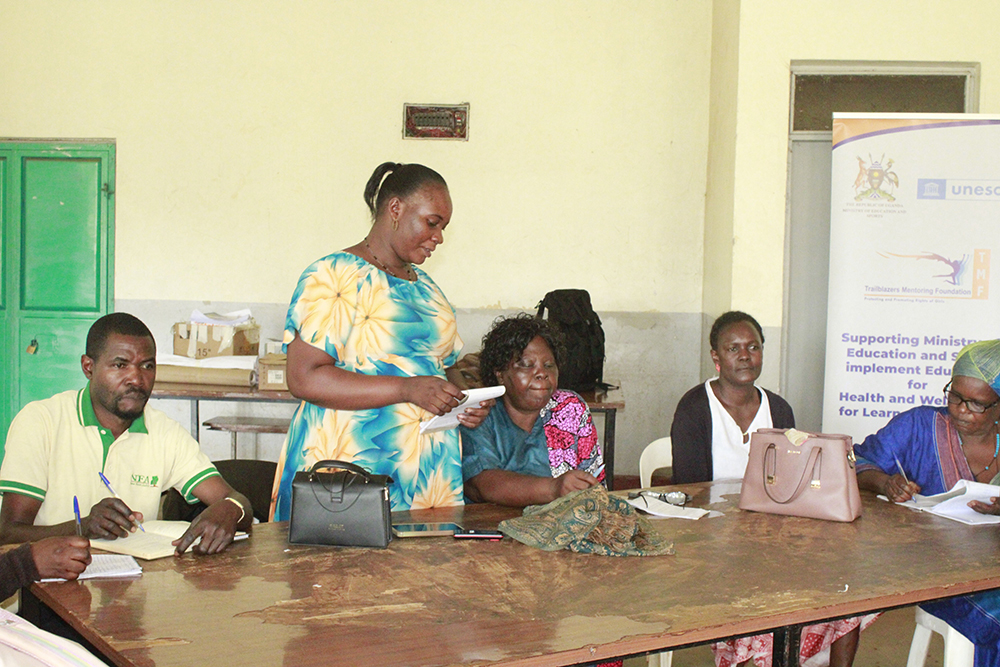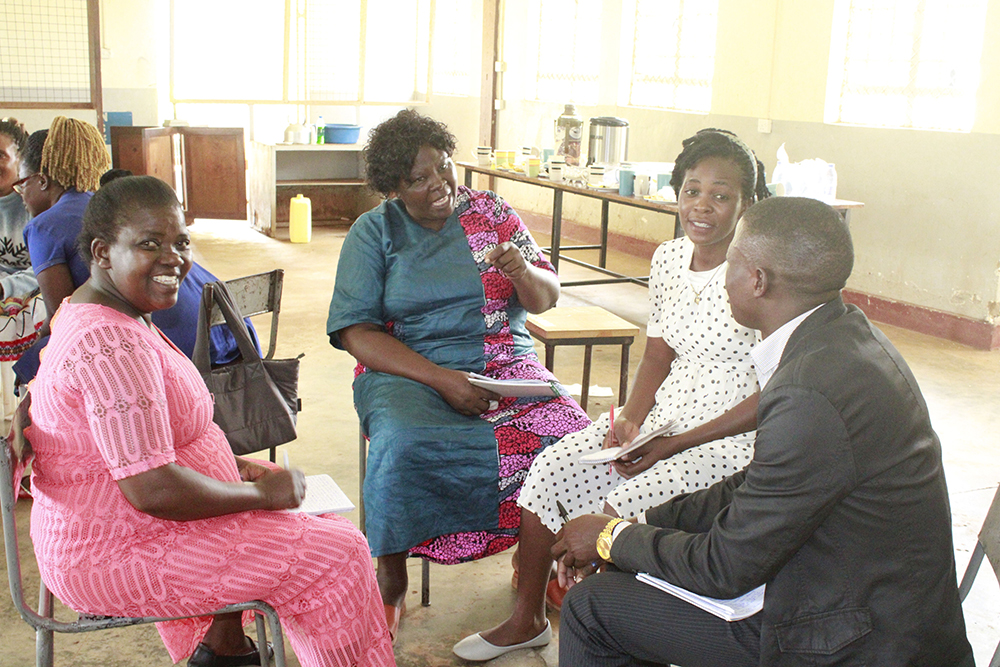Jinja teachers unite against violence in schools
Many children shun school due to sexual violence, bullying and harsh punishments such as pulling their ears and noses, locking them inside a room, and being forced to dig ant hills. Others are denied food and told to kneel with bricks in their hands for hours.
Some of the teachers who attended the training. (Courtesy)
_______________
Different forms of violence persist in schools around the country despite interventions from child rights activists, plus government, and its partners.
In Jinja district, 35 senior women and senior men teachers from private and government-aided schools, both primary and secondary, have united to end violence in their communities.
They pledge to create awareness and also ensure schools put in place safe mechanisms to protect learners from all forms of violence with an aim of making schools safe and enjoyable.
In the end, they anticipate, this intervention will help increase enrollment and retention in many schools. This initiative was birthed during a three-day training by the Ministry of Education and Sports in partnership with UNESCO and Trailblazers Mentoring Foundation (TMF). It was held at MM Wairaka College from Friday, July 11-13, under the theme, Building positive respectful relationships and reducing gender based violence in schools.
Eric Gitta, a facilitator from the education ministry says; “We train teachers to tackle violence and keep children in school under a model called ‘connect with respect’. We also equip them with alternative punishments rather than caning.”
In addition, teachers are able to build lasting relationships by respecting each other and the learners. Once the children feel loved, Gitta says; “Discipline is easily managed.” This model is being piloted in Namayingo, Jinja and Kabalore districts, which grapple with high cases of violence against children.
To TMF executive director Joyce Atimango, schools should be safe spaces for children, given that they spend about 80% of their time there. Unfortunately, violence against children has been normalised in some schools, and this contributes to high dropout rates, poor performance and low self-esteem.
She advises schools to review their rules and regulations to include the voices of children. This way, the learners will easily take responsibility for their actions. Schools should also train teachers to understand, appreciate and employ positive disciplinary methods rather than inflicting pain on a child. For example, asking the learner to reflect on their misbehaviour such that they learn from it.
Teachers can also counsel and guide, use verbal warning or ask a wrongdoer to apologise in front of their peers. You can also withdraw privileges, such as stopping a football lover from attending a football match.
Teachers made presentations. (Courtesy)

Teachers formed groups to discuss matters. (Courtesy)
Jinja district inspector of schools Charles Kitamirike says they have received numerous complaints of how learners are beaten and injured. Then, teachers end up in prison. But also, many children shun school due to sexual violence, bullying and harsh punishments such as pulling their ears and noses, locking them inside a room, and being forced to dig ant hills. Others are denied food and told to kneel with bricks in their hands for hours.
He calls upon teachers to have self-control, manage their anger and put themselves in the children’s shoes before beating them. They should also embrace the alternative punishments from the ministry.
Meanwhile, the United Nations 2030 Agenda for Sustainable Development vision looks at a world which invests in its children and in which every child grows up free from violence and exploitation.
Violence is defined under article 19 of the Convention on the Rights of Children to mean all forms of physical or mental violence, injury and abuse, neglect or neglect treatment, maltreatment or exploitation, including sexual abuse.